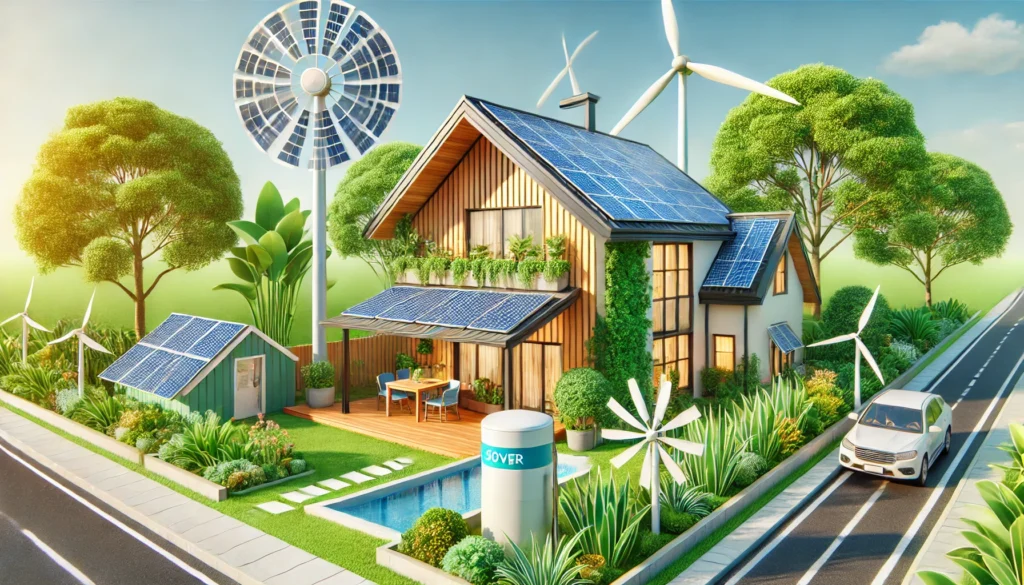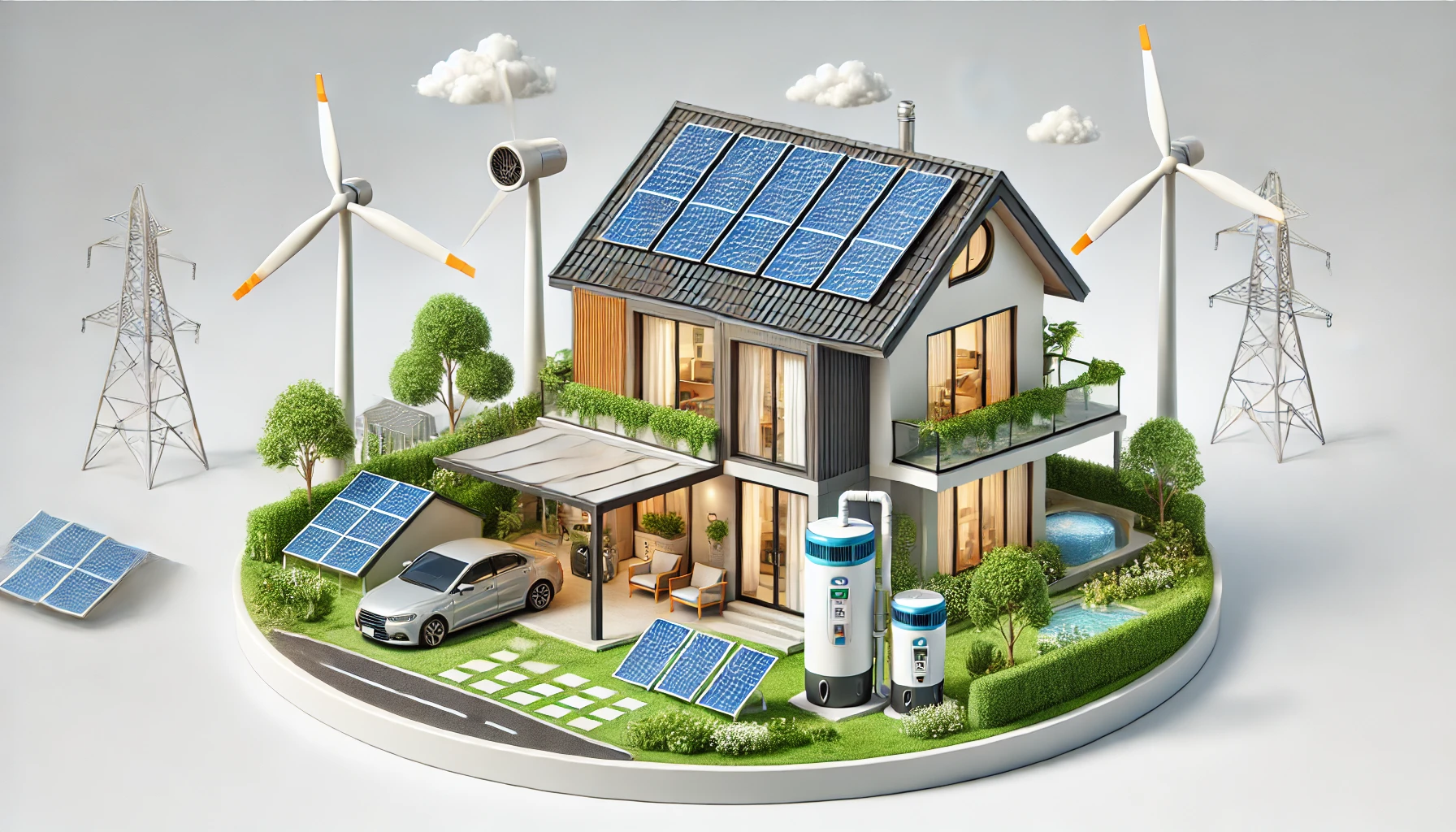
As energy costs rise and environmental concerns become more pressing, many homeowners are exploring renewable energy options to power their homes sustainably. With advancements in technology, there are now several ways you can make your home more energy-efficient and eco-friendly. Below is a comprehensive guide to the top 10 renewable energy solutions for homes, helping you make an informed decision for a greener future.
1. Solar Panels
- Overview: Solar panels are one of the most popular renewable energy solutions for homes. They harness the sun’s energy and convert it into electricity to power your appliances, lights, and heating systems.
- Benefits: Solar panels reduce your electricity bills and carbon footprint while providing an independent energy source. They work well in most climates, even on cloudy days.
- Considerations: Installation costs can be high, but tax incentives and rebates can help offset the expense. Regular maintenance is also required to keep them efficient.
2. Wind Turbines
- Overview: Wind turbines convert wind energy into electricity and are a great option for homes in rural or open areas with consistent wind speeds.
- Benefits: Small-scale wind turbines can significantly cut down your electricity costs and are often used as a complementary power source alongside solar panels.
- Considerations: Wind turbines require space and suitable weather conditions. They can be noisy and may not be practical for all locations.
3. Geothermal Systems
- Overview: Geothermal systems use the earth’s stable underground temperature to heat and cool your home. They are efficient and can be used year-round.
- Benefits: Geothermal systems offer consistent energy supply, are environmentally friendly, and can last for decades with proper maintenance.
- Considerations: The installation process can be expensive and invasive, as it involves digging deep into the ground. However, the long-term savings often make it worthwhile.
4. Solar Water Heaters
- Overview: Solar water heaters use solar energy to heat water for your home, providing an eco-friendly and efficient alternative to electric or gas water heaters.
- Benefits: They can cut your water heating costs by 50-80%, making them a practical and cost-effective solution for many households.
- Considerations: They work best in sunny climates but may require a backup system on cloudy days or during the winter months.
5. Biomass Energy
- Overview: Biomass energy involves burning organic materials like wood pellets, agricultural waste, or other plant matter to generate heat.
- Benefits: It’s a renewable and carbon-neutral energy source, as the carbon dioxide emitted during combustion is roughly equal to the amount the plants absorbed during their growth.
- Considerations: While biomass systems are efficient, they require storage space for the fuel and may not be suitable for urban homes due to emissions.
6. Energy Storage Solutions (Home Batteries)
- Overview: Energy storage systems, such as home batteries, store energy produced by renewable sources like solar panels for use when the sun isn’t shining or during power outages.
- Benefits: These systems increase energy independence and efficiency, ensuring you have access to renewable energy around the clock.
- Considerations: Batteries can be expensive, but they are an excellent long-term investment, especially when combined with other renewable energy systems.
7. Hydroelectric Systems for Small Properties
- Overview: Micro-hydro systems use the flow of water from a stream or river to generate electricity. They are ideal for homes located near a consistent water source.
- Benefits: These systems provide continuous power and are more reliable than solar or wind when water flow is steady.
- Considerations: They are only practical if you have access to a suitable water source and may require permits and environmental assessments before installation.
8. Passive Solar Home Design
- Overview: Passive solar design involves building or renovating your home in a way that maximizes natural sunlight for heating and lighting. This can include using materials that store and distribute heat effectively.
- Benefits: This approach reduces the need for artificial heating and cooling, lowering energy costs and reducing environmental impact.
- Considerations: While it may not be feasible for existing homes without major renovations, it’s a great option for new builds.
9. Solar-Powered Outdoor Lighting
- Overview: Solar-powered outdoor lighting uses small solar panels to charge batteries that power lights at night, making it an efficient and eco-friendly option for gardens and pathways.
- Benefits: It’s a simple and cost-effective way to reduce energy use and enhance outdoor spaces without increasing your electricity bill.
- Considerations: The effectiveness of solar lights depends on the amount of sunlight received during the day, so they may not work well in heavily shaded areas.
10. Hybrid Renewable Energy Systems
- Overview: Combining multiple renewable energy sources, like solar and wind, into a hybrid system can optimize energy production and storage, ensuring a reliable supply even when conditions for one energy source are unfavorable.
- Benefits: Hybrid systems are highly efficient and adaptable to different climates and environments, making them a versatile solution for any home.
- Considerations: These systems may have higher initial costs due to the integration of multiple technologies, but they offer greater energy reliability and independence.
Conclusion
Adopting renewable energy solutions for your home is a powerful way to reduce energy bills, decrease your carbon footprint, and become more energy independent. Whether you choose solar panels, wind turbines, or a hybrid system, there are numerous options available that can be tailored to your needs and location. By investing in these technologies, you’re not only contributing to a greener future but also ensuring long-term savings and sustainability for your home.
